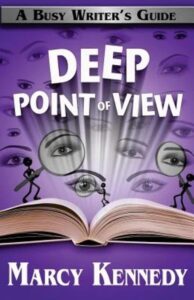Not long ago, in the stories, the narrator was all-knowing, neutral, god-like, omniscient. The narrator freely observed the story’s world from above, reported all actions to the reader, and moved seamlessly from one character’s head to another, sharing their thoughts. For example,
Only the omniscient narrator can tell the reader “both brothers were imaginary.”
In the nineteenth century, the omniscient narrator lost its prominence, and other types of narrators began to prevail in literature. One type reported only the actions and appearances of characters (called the objective third-person point of view). Another type zoomed in on the thoughts of a single character within the story world (called the limited third-person point of view).
A different kind of narration, known as free indirect thought, draws the reader closer to a character’s inner experience. Authors like Jane Austen, John Steinbeck, Flannery O’Connor, Virginia Woolf, and many others wrote using this technique. With this narrator, the reader doesn’t just read about what’s going on in the character’s thoughts; the reader is directly immersed in them, as if thinking alongside the character.
Nowadays, the narrator feels even closer to the reader when writing in Deep POV. Before we dive into Deep POV, we need to refresh our understanding of narrative distance.
What is Narrative Distance?
The reader initially knows nothing about a character’s inner world. It’s up to the narrator to determine how much access the reader has to that inner world—or whether the reader is kept entirely outside it.
Narrative distance is the space between the reader and the character’s inner world, as controlled by the narrator.
Narrative distance exists on a spectrum.
At the maximum distance, the reader is completely outside the character’s inner world, only observing appearances and actions. At the minimum distance, the reader is fully immersed in the character’s thoughts and feelings, as if inside the character’s head. This is known as Deep POV.
There are many misconceptions about Deep POV:
1. Deep PoV is First-person PoV.
2. Deep PoV consists only of internal dialogue, written in Italic, therefore boring.
3. Deep PoV is merely removing tags and certain verbs (thought, feel, …)
The last point is the biggest misconception about Deep POV—and I’ll explain why.
Imagine this story world: a mother and her child are wandering through a forest.

If we choose the mother as the Deep POV character, what would she notice? The shadows? The tall trees? Or is she worried about getting lost?
Now, if we choose the child as the Deep POV narrator, what would the child notice? The child might focus on a nearby pond, while the mother is concerned with finding the path. The mother and child wouldn’t share the same perception of the forest.
Writing in Deep POV brings the reader directly inside the character’s head. The story world is experienced completely subjectively. That means vocabulary, sentence structure, tone, sensory focus, and, most importantly, internal logic must all shift to reflect the character’s perspective.
Because Deep POV should contain no trace of the author’s voice, the reader should feel fully immersed in the mind of either the child or the mother, not the writer.
I think of Deep POV as a pair of glasses with colored lenses. Imagine you have two characters: one wears blue lenses, the other yellow.

- An omniscient narrator might say: “A sees the world as blue because of his glasses, and B sees it as yellow. Neither realizes their lenses change how things look.” (Notice the comment—the all-knowing narrator understands everything!)
- A third-person limited narrator might say: “The world shimmered in soft blues. Trees, buildings, even the sky—cool and quiet. He liked it that way.”
- But a Deep POV narrator says: “Blue. Everything was blue. The sky, the sidewalk, even the shadows between the trees. Like the world had exhaled and cooled just for him, he stepped forward, calmer now. No harsh lights, no screaming color—just quiet. Finally, it made sense.”
Now, replace the colored-lens metaphor with something more abstract: mindset.
Imagine the character wears not glasses, but a worldview—say, a conspiracy theory. This mindset profoundly influences how they perceive everything around them. In Deep POV, that character wouldn’t even question their assumptions. To them, this is simply how the world works. No doubt. No second-guessing. Just reality.
Craft Books on Writing Deep POV
Writing in Deep POV is a unique tool in your craft box. However, learning it takes time, let alone mastering it. These are the books I read to teach myself:
- Rivet Your Readers with Deep Point of View by Jill Elizabeth Nelson
- Deep Point of View Worksheet by Camy Tang
- Deep Point of View by Marcy Kennedy
- Writing Deep Point Of View by Rayne Hall
I highly recommend the last two books. In Deep Point of View, Marcy Kennedy gives you a good grasp of the nature of Deep POV.

And, Rayne Hall, in Writing Deep Point of View, offers many practical tips and insights to learn from.

This blog post is part of my new series, Craft of Storytelling. In the next post, I’ll explore books on the science of storytelling.
If you haven’t yet, please feel free to check out my previous post on PicturebookPedia and ChapterBookPedia.




